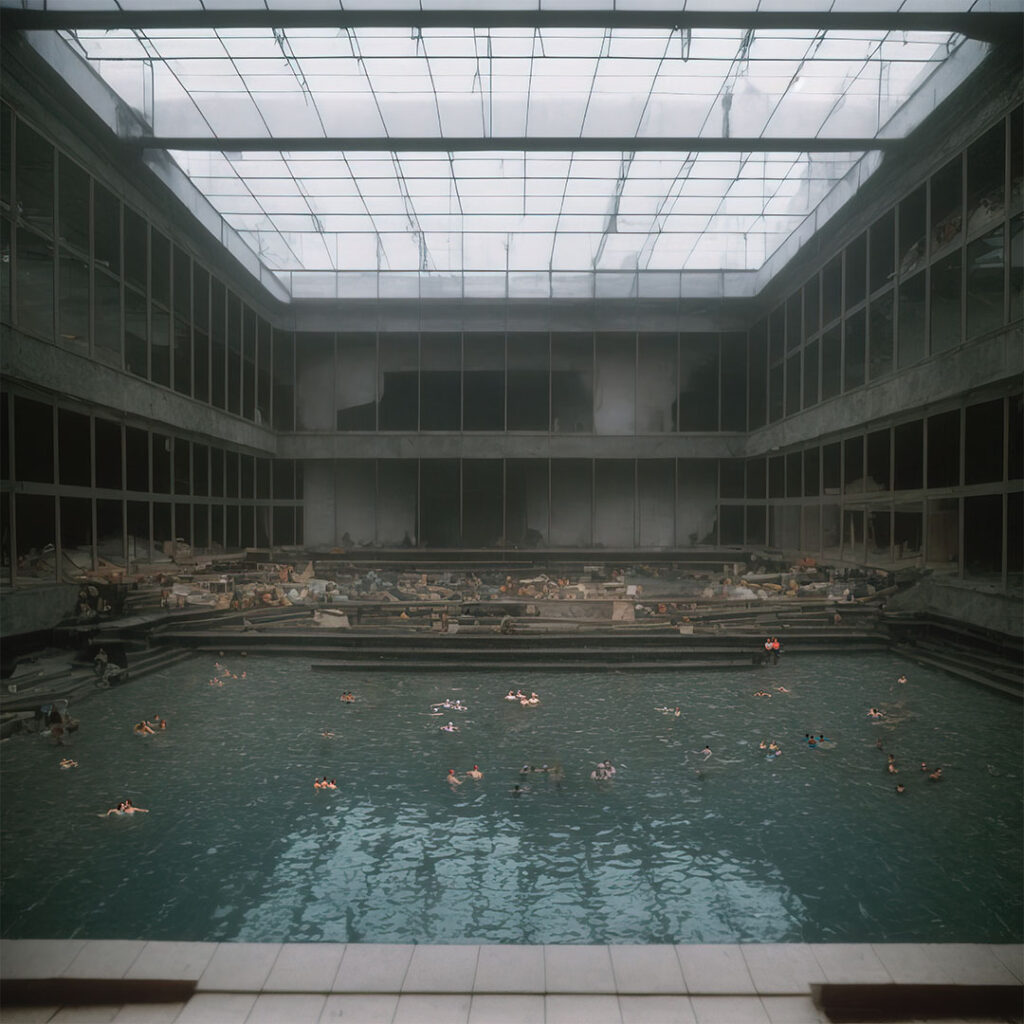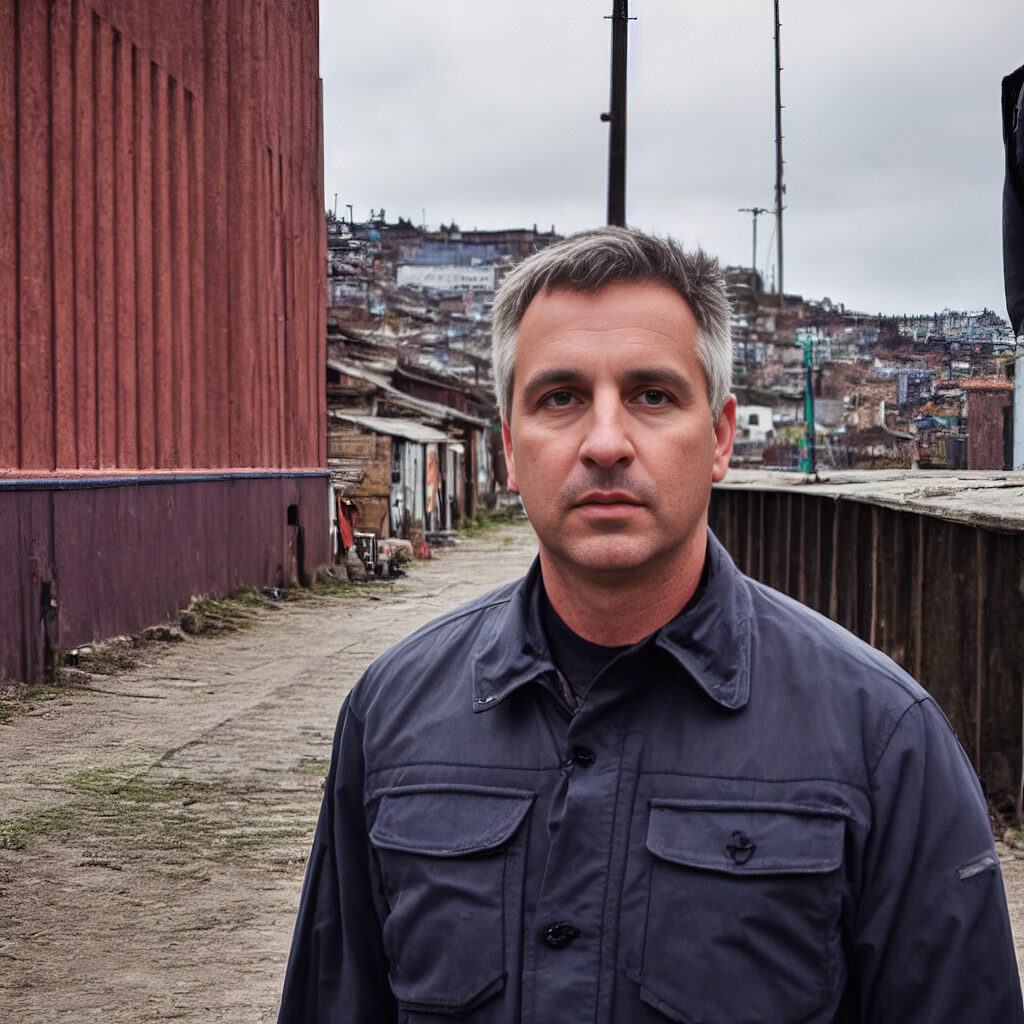L’IA et l’aliénation du futur / AI and the alienation of the future

L’un des thèmes récurrents de la théorie critique et d’émancipation semble consister depuis quelques années dans l’analyse de l’absence de futur. Tout se passe comme si le réalisme capitaliste, concept élaboré par Mark Fisher, avait empêché jusqu’à l’espoir d’un autre avenir et avait fait adhérer le temps avec lui-même dans une synchronisation contemporaine infernale.
De l’autre côté, et ceci depuis les Secondes considérations intempestives (1874) de Nietzsche, c’est la surcharge du passé qui est critiqué. Le trop de mémoire semble obstruer de l’autre côté la possibilité d’un avenir et constituer un poids si lourd qu’il écrase l’individu : tout a déjà eu lieu, nous sommes des tard venus. Ce trop-plein de mémoire est particulièrement accentué avec Internet qui consiste pour une grande part en la construction de base de données dont les quantités rendent même obsolètes la notion d’archives et la constitution historique d’un passé appropriable.
Par là même une dialectique entre la critique du postmodernisme, entendu comme la répétition du passé sous forme de citations choisies, et la suture du futur effectué par le néolibéralisme, semble voir le jour d’où certains tentent de faire émerger une autre possibilité, quelque peu idéaliste dans la mesure où ils décrivent avec force détails les raisons pour lesquelles du côté de l’avant et du côté de l’après nous sommes comme à l’arrêt.
L’induction statistique, ou intelligence artificielle, semble, par rapport à cette problématique de la double fermeture et de la contradiction entre le passé et l’avenir, ouvrir une voie qui si elle est étroite n’en est pas moins singulière et en passe de constituer une alternative à cette opposition sans doute trop simple. Car si les réseaux de neurones inductifs se nourrissent à la manière d’organismes vivants des données qui ont été déposées au fil des trois dernières décennies sur le Web, ce n’est pas seulement pour en faire une moyenne statistique qui ne serait capable que de répéter à l’infini ce qui est déjà eu lieu, mais en vue, si on sait correctement se déplacer et métaboliser anthropologiquement l’espace latent des statistiques, d’opérer une nouvelle articulation entre les archives du passé et l’ouverture des possibles de l’avenir.
En effet, lorsque nous observons certaines images produites par l’induction statistique, nous détectons une espèce de flux très étrange entre un sentiment du passé, quelque chose d’archivistique, et l’affect de quelque chose que nous n’avons jamais vu et qui est à la limite de pouvoir évoquer l’avenir, surréaliste, hallucinatoire, psychédélique. L’induction statistique ne produit pas une moyenne répétitive, mais la tonalité affective d’un air de famille, un air de ressemblance qui n’est pas la stricte répétition de ce que nous avons déjà vu, car l’espace latent peut plier plusieurs catégories qui ne sont pas référentiellement proches.
La capacité métamorphique de ces productions ne s’applique pas uniquement au mélange de catégorie ontologique distincte, mais permet d’articuler autrement les archives et leur devenir à venir. Par la même la distinction qu’avait proposé Jacques Derrida entre le futur calculable et l’avenir incalculable, par exemple dans les premières pages De la Grammatologie (1967), mettant en avant l’événement anomique et inimaginable, semble trembler et se disloquer sous nos yeux parce que précisément c’est la mise en calcul général des archives qui permet de créer un nouveau flux entre ce qui a été et ce qui pourrait être.
À partir de là, la dialectique entre le postmodernisme qui ne serait capable que de répéter le passé et le néolibéralisme qui aurait été capables de fermer jusqu’à la possibilité la plus minime de l’avenir, se trouve troublée par une calculabilité nouvelle qui loin d’être une maîtrise de la volonté de puissance semble effectuer une relance, et pour ainsi dire une résurrection de ce qui n’a jamais eu lieu. Le caractère logiquement paradoxal de cette structure oblige à des formulations tâtonnantes et approximatives où, par exemple, nous parlons de compléter l’histoire ou d’une résurrection strictement athée et matérialiste sans arrière-plans théologiques. Ces formulations aussi insatisfaisantes soient-elles, permettent tout du moins de rendre sensible la nouvelle temporalité et la nouvelle historicité, du côté du passé et de l’avenir, que semblent ouvrir l’induction statistique des réseaux récursifs de neurones et de l’hypermnésie accumulée du Web.

One of the recurrent themes of critical and emancipation theory seems to consist in the analysis of the absence of a future. Everything happens as if capitalist realism, a concept elaborated by Mark Fisher, had prevented even the hope of another future and had made time adhere with itself in a contemporary infernal synchronization.
On the other hand, and this since Nietzsche’s Second Untimely Considerations (1874), it is the overload of the past that is criticized. On the other side, too much memory seems to obstruct the possibility of a future and to constitute a weight so heavy that it crushes the individual: everything has already happened, we are latecomers. This overflow of memory is particularly accentuated with Internet which consists for a great part in the construction of data base whose quantities make even obsolete the notion of archives and the historical constitution of an appropriable past.
By the same token, a dialectic between the critique of postmodernism, understood as the repetition of the past in the form of selected quotations, and the suture of the future carried out by neoliberalism, seems to emerge from which some try to make another possibility emerge, somewhat idealistic insofar as they describe in great detail the reasons why on the side of the before and on the side of the after we are as if we had stopped.
Statistical induction, or artificial intelligence, seems, in relation to this problem of the double closure and the contradiction between the past and the future, to open up a path which, if it is narrow, is nonetheless singular and on the way to constituting an alternative to this opposition, which is undoubtedly too simple. For if inductive neural networks feed themselves, like living organisms, with the data that have been deposited on the Web over the last three decades, it is not only in order to make a statistical average that would only be capable of repeating ad infinitum what has already taken place, but with a view, if we know how to correctly move and anthropologically metabolize the latent space of statistics, to operate a new articulation between the archives of the past and the opening of the possibilities of the future.
Indeed, when we observe certain images produced by statistical induction, we detect a kind of very strange flow between a feeling of the past, something archival, and the affect of something that we have never seen and that is on the verge of being able to evoke the future, surreal, hallucinatory, psychedelic. The statistical induction does not produce a repetitive average, but the affective tone of a family air, an air of resemblance that is not the strict repetition of what we have already seen, because the latent space can fold several categories that are not referentially close.
The metamorphic capacity of these productions does not only apply to the mixing of distinct ontological categories, but allows for a different articulation of the archive and its future. By the same token, the distinction that Jacques Derrida had proposed between the calculable future and the incalculable future, for example in the first pages of De la Grammatologie (1967), putting forward the anomic and unimaginable event, seems to tremble and dislocate before our eyes because precisely it is the putting in general calculation of the archives that allows to create a new flow between what has been and what could be.
From there, the dialectic between postmodernism, which would only be capable of repeating the past, and neoliberalism, which would have been capable of closing down even the smallest possibility of the future, is disturbed by a new calculability that, far from being a mastery of the will to power, seems to carry out a revival, and so to speak, a resurrection of what has never taken place. The logically paradoxical character of this structure obliges to fumble and approximate formulations where, for example, we speak of completing history or of a strictly atheistic and materialist resurrection without theological backgrounds. These formulations, as unsatisfactory as they are, allow at least to make sensitive the new temporality and the new historicity, on the side of the past and the future, that seem to open the statistical induction of the recursive networks of neurons and of the accumulated hypermnesia of the Web.
